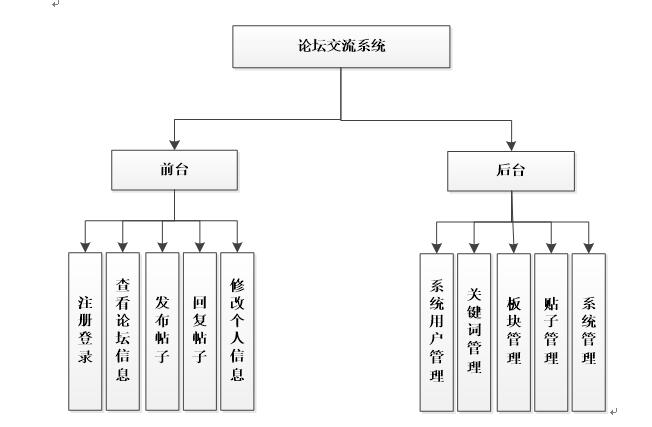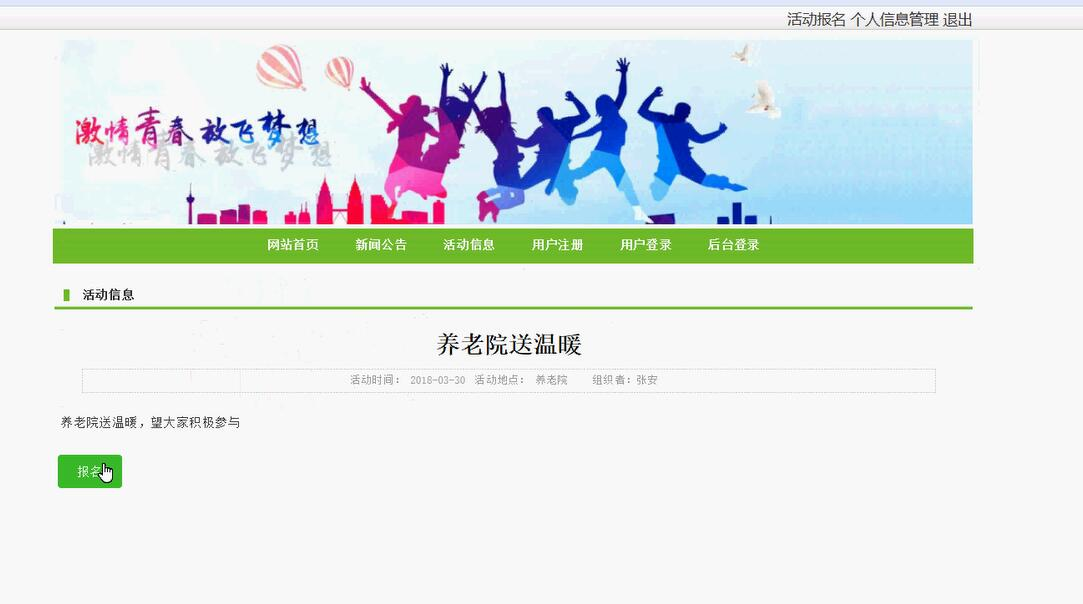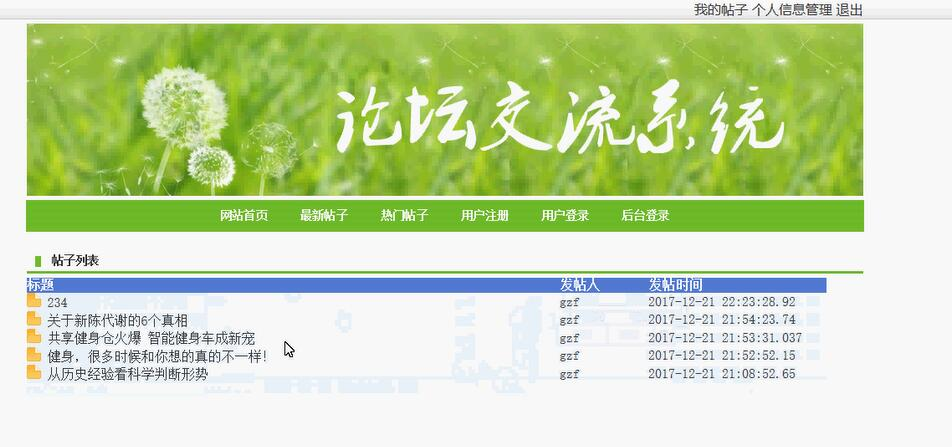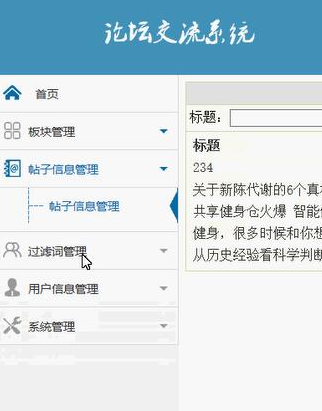Operating environment:
Development tools: IDEA /Eclipse
Database: mysql5 seven
Application service: Tomcat7/Tomcat8
Using framework: Spring + spring MVC + mybatis
Project introduction
Nowadays, great changes have taken place in our computer-based lifestyle. The rapid development of the Internet makes everyone pay attention to the value of the Internet. We can entertain, shop and communicate through various media platforms on the Internet. Compared with other media platforms, the emerging online forums can express and exchange various views more freely. It can be said that the forum has become a stage for people to realize their self-worth. People can post for help or reply to help others in the forum, or conduct extensive and in-depth research and Discussion on a certain issue, Therefore, running a good online forum can timely show and spread many innovative ideas and views, and the correct ideas are deeply rooted in the hearts of the people and popularized. Wrong views were eliminated and corrected. The same is true of the school forum, which is a platform for students to gather together to exchange and share their study and life. This paper analyzes the needs of the forum. Students can register in the forum first. After registration, they can post replies in each section. Each section has an administrator to delete and modify the corresponding posts.
back-stage management
This system is a website system based on B/S architecture. The specific functions are as follows
1: Users can register and log in through the system. After logging in, they can publish and reply to posts. Unregistered users can only view posts, not publish and reply
2: Post and reply to posts. After logging in, users can post their own posts in different sections and reply to their own insightful posts
3: Modify personal information. Registered users can modify their personal information as needed after logging in
4: Administrator login, administrators can log in through their own user name and password
5: Forum section management: the administrator can manage the corresponding forum section, including the name and introduction of the forum section. After adding, it can be automatically displayed on the front desk, and users can communicate under different sections
6: User management: administrators can manage registered users, including day-to-day modification of users
7: Post management: the administrator can manage the posts and replies published by users, and delete some sensitive posts and replies
8: Change the password. Administrators can change their own password

design sketch



Controller class
/**
* Login related
*/
@RequestMapping("config")
@RestController
public class ConfigController{
@Autowired
private ConfigService configService;
/**
* list
*/
@RequestMapping("/page")
public R page(@RequestParam Map<String, Object> params,ConfigEntity config){
EntityWrapper<ConfigEntity> ew = new EntityWrapper<ConfigEntity>();
PageUtils page = configService.queryPage(params);
return R.ok().put("data", page);
}
/**
* list
*/
@IgnoreAuth
@RequestMapping("/list")
public R list(@RequestParam Map<String, Object> params,ConfigEntity config){
EntityWrapper<ConfigEntity> ew = new EntityWrapper<ConfigEntity>();
PageUtils page = configService.queryPage(params);
return R.ok().put("data", page);
}
/**
* information
*/
@RequestMapping("/info/{id}")
public R info(@PathVariable("id") String id){
ConfigEntity config = configService.selectById(id);
return R.ok().put("data", config);
}
/**
* details
*/
@IgnoreAuth
@RequestMapping("/detail/{id}")
public R detail(@PathVariable("id") String id){
ConfigEntity config = configService.selectById(id);
return R.ok().put("data", config);
}
/**
* Get information by name
*/
@RequestMapping("/info")
public R infoByName(@RequestParam String name){
ConfigEntity config = configService.selectOne(new EntityWrapper<ConfigEntity>().eq("name", "faceFile"));
return R.ok().put("data", config);
}
/**
* preservation
*/
@PostMapping("/save")
public R save(@RequestBody ConfigEntity config){
// ValidatorUtils.validateEntity(config);
configService.insert(config);
return R.ok();
}
/**
* modify
*/
@RequestMapping("/update")
public R update(@RequestBody ConfigEntity config){
// ValidatorUtils.validateEntity(config);
configService.updateById(config);//Update all
return R.ok();
}
/**
* delete
*/
@RequestMapping("/delete")
public R delete(@RequestBody Long[] ids){
configService.deleteBatchIds(Arrays.asList(ids));
return R.ok();
}
}
catalogue
Summary I
Abstracts I
Directory I
Chapter 1 Introduction 1
1.1 subject background 1
1.2 research significance 1
1.3 research contents 2
Chapter 2 technical introduction 2
2.1 related technologies 3
2.2 Java technology 3
2.3 MySQL database 4
2.4 introduction to Tomcat 4
2.5 ssm frame5
Chapter 3 demand analysis 5
3.1 demand analysis overview 6
3.2 feasibility analysis 6
3.2.1 economic feasibility 6
3.2.2 technical feasibility 7
3.3 system function design 7
Chapter 4 system design 7
4.1 system structure design 7
4.2 database design 8
4.2.1 entity ER figure 8
4.2.2 data sheet 10
Chapter 5 system implementation 14
5.1 administrator function module 14
5.2 front page function module 18
5.3 user function module 18
Chapter 6 system test 23
6.1 test definition and purpose 23
6.2 test methods 23
6.3 test module 24
6.4 test results 25
Conclusion 26
Thanks 27
References 28